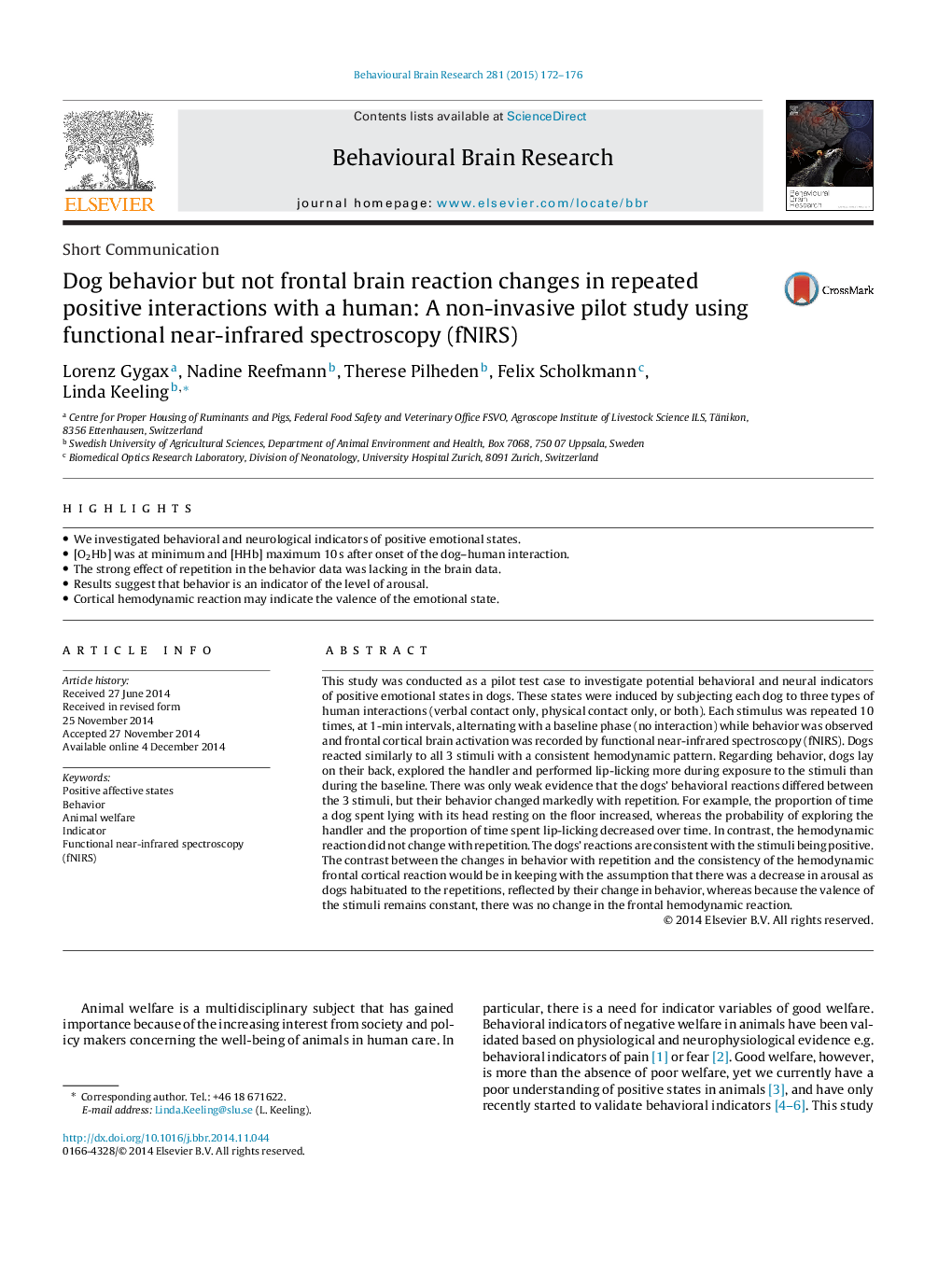| کد مقاله | کد نشریه | سال انتشار | مقاله انگلیسی | نسخه تمام متن |
|---|---|---|---|---|
| 6257058 | 1612951 | 2015 | 5 صفحه PDF | دانلود رایگان |

- We investigated behavioral and neurological indicators of positive emotional states.
- [O2Hb] was at minimum and [HHb] maximum 10Â s after onset of the dog-human interaction.
- The strong effect of repetition in the behavior data was lacking in the brain data.
- Results suggest that behavior is an indicator of the level of arousal.
- Cortical hemodynamic reaction may indicate the valence of the emotional state.
This study was conducted as a pilot test case to investigate potential behavioral and neural indicators of positive emotional states in dogs. These states were induced by subjecting each dog to three types of human interactions (verbal contact only, physical contact only, or both). Each stimulus was repeated 10 times, at 1-min intervals, alternating with a baseline phase (no interaction) while behavior was observed and frontal cortical brain activation was recorded by functional near-infrared spectroscopy (fNIRS). Dogs reacted similarly to all 3 stimuli with a consistent hemodynamic pattern. Regarding behavior, dogs lay on their back, explored the handler and performed lip-licking more during exposure to the stimuli than during the baseline. There was only weak evidence that the dogs' behavioral reactions differed between the 3 stimuli, but their behavior changed markedly with repetition. For example, the proportion of time a dog spent lying with its head resting on the floor increased, whereas the probability of exploring the handler and the proportion of time spent lip-licking decreased over time. In contrast, the hemodynamic reaction did not change with repetition. The dogs' reactions are consistent with the stimuli being positive. The contrast between the changes in behavior with repetition and the consistency of the hemodynamic frontal cortical reaction would be in keeping with the assumption that there was a decrease in arousal as dogs habituated to the repetitions, reflected by their change in behavior, whereas because the valence of the stimuli remains constant, there was no change in the frontal hemodynamic reaction.
Journal: Behavioural Brain Research - Volume 281, 15 March 2015, Pages 172-176